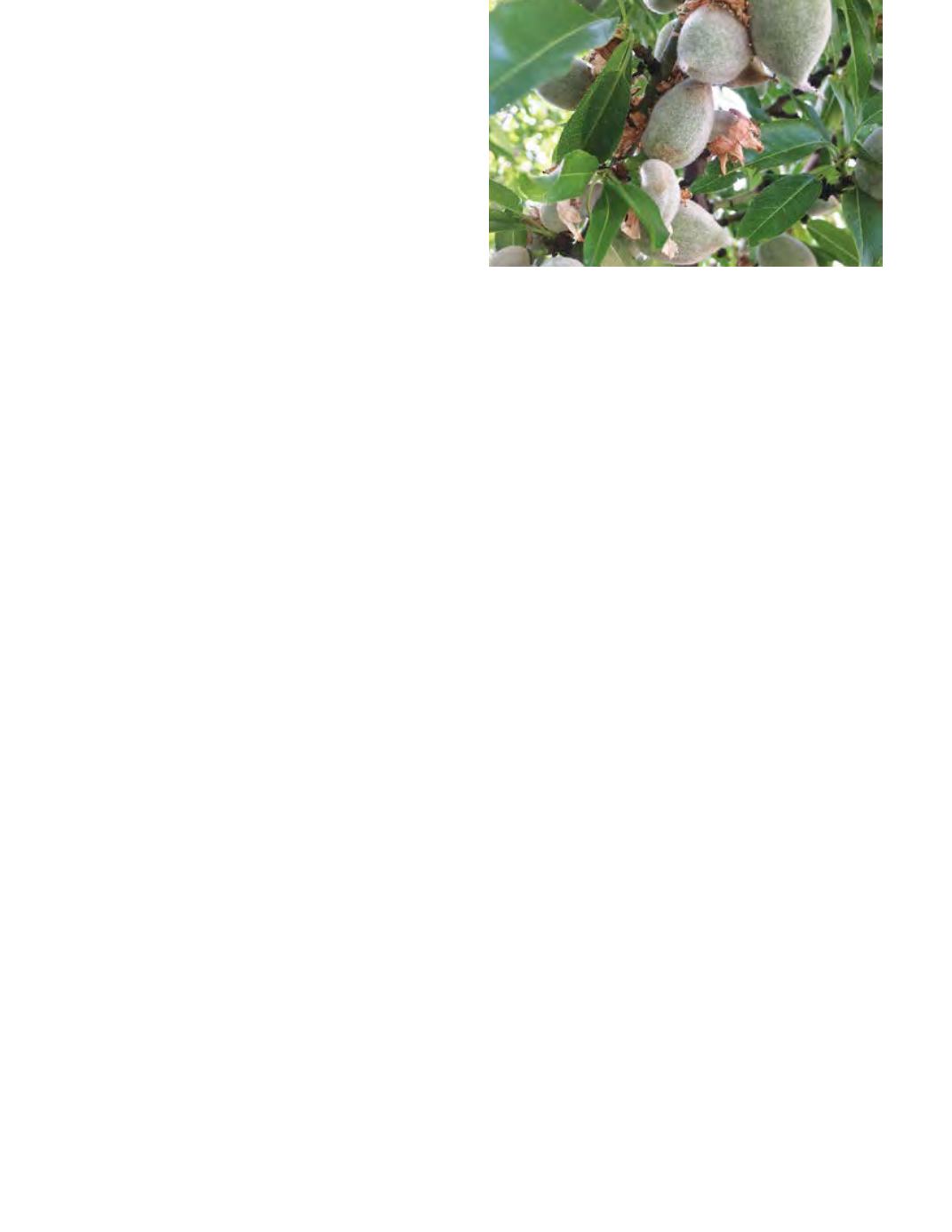
we applied the first irrigation the fourth week of April
when stem water potential readings reached 1.5 bars more
negative than baseline. By that time, the neighboring blocks
were irrigated three times. We estimated that the grower
saved $15 per acre in a reduction in pump and water
costs. The late rains of 2016 provided the water needed
by the trees. Although this is not typical of every year, it
illustrates the point of monitoring tree or soil water status
in determining when to irrigate.
Over-irrigation in the spring can negatively impact tree
performance. Annually, several calls regarding poor tree
growth and "pale trees" are received. This is often due to
saturated soils. Too wet of soils reduces the movement of
oxygen into the soil, killing fine feeder roots. This impacts
the ability for the tree to uptake water and nutrients,
leading to micro-nutrient deficiencies, impacting nut set
and tree growth. Later-season effects are also observed
and include a limited rootzone, leading to severe water
stress during hull-split and harvest. The problem is often
compounded by fertigation or chemigation in attempts
to manage the symptoms.
Pest and Disease Considerations for March/April
Disease concerns tend to run high in the spring as rains
may provide environmental conditions conducive for
infection. Sprays for shot-hole, anthracnose, jacket rot,
and bacterial spot should be based on rainfall events.
Summer diseases of rust and scab, however, may still
be problematic and may require a treatment even in dry
spring conditions. Treatment timings for scab is two to
five weeks post petal fall, and five weeks post petal
fall or later for rust. Anthracnose and bacterial spot
proliferate in warm, rainy weather and may require multiple
treatments prior to rainfall events. Bacterial spot treatments
involve copper and mancozeb treatments and should be
considered in orchards that have a history of disease.
Please discuss the usage of copper with your PCA or Farm
Advisor as almonds are sensitive to this element. Orchard
history, cultivar, and irrigation systems should be factors in
determining the need for treatment. More information can
be found at the UCIPM website or in the January/February
Time to Consider column.
Insect concerns include San Jose Scale (SJS), Peach Twig
Borer (PTB), and Leaffooted Plant Bug (LPB). With the
warmer spring, male emergence for SJS and the biofix for
PTB may be earlier. Therefore, the traditional "May Spray"
timing may also be earlier. Timing of a growth regulator for
SJS control should be 400 DD after the male flight. A spring
treatment for PTB should be made 400-500 DD after the
biofix. Keep in mind that the PTB timing often overlaps with
the spring flight of NOW. If timed properly, this spray could
provide early season control for both pests.
Keep an eye out for LPB. These bugs are difficult to kill,
and damage is erratic and hard to predict. Research does
suggest that over-wintering populations are reduced by
below freezing temperatures. In years with mild winters,
such as this past year, populations tend to be higher. Sprays
should be timed once adults are first detected, not once
damage occurs. Try to identify an area in which the insects
have aggregated. Once they disperse, be on the lookout
for the LPB in the orchard. Damaged nuts do not show
symptoms for several days to weeks after initial feeding.
Please keep in mind that there are more pests that affect
almonds during this time period. More information can be
found at ucipm.ucdavis.edu.
Almond varieties that form large clusters of nuts are more prone
to jacket rot. The fungi that cause jacket rot are problematic in
wet years. The initial infection occurs on the dying jacket tissues
which then moves to the healthy almond hull. FRAC 3 and FRAC
11 fungicides are not very effective in controlling jacket rot.
3 1
M A R C H – A P R I L 2 0 1 8


